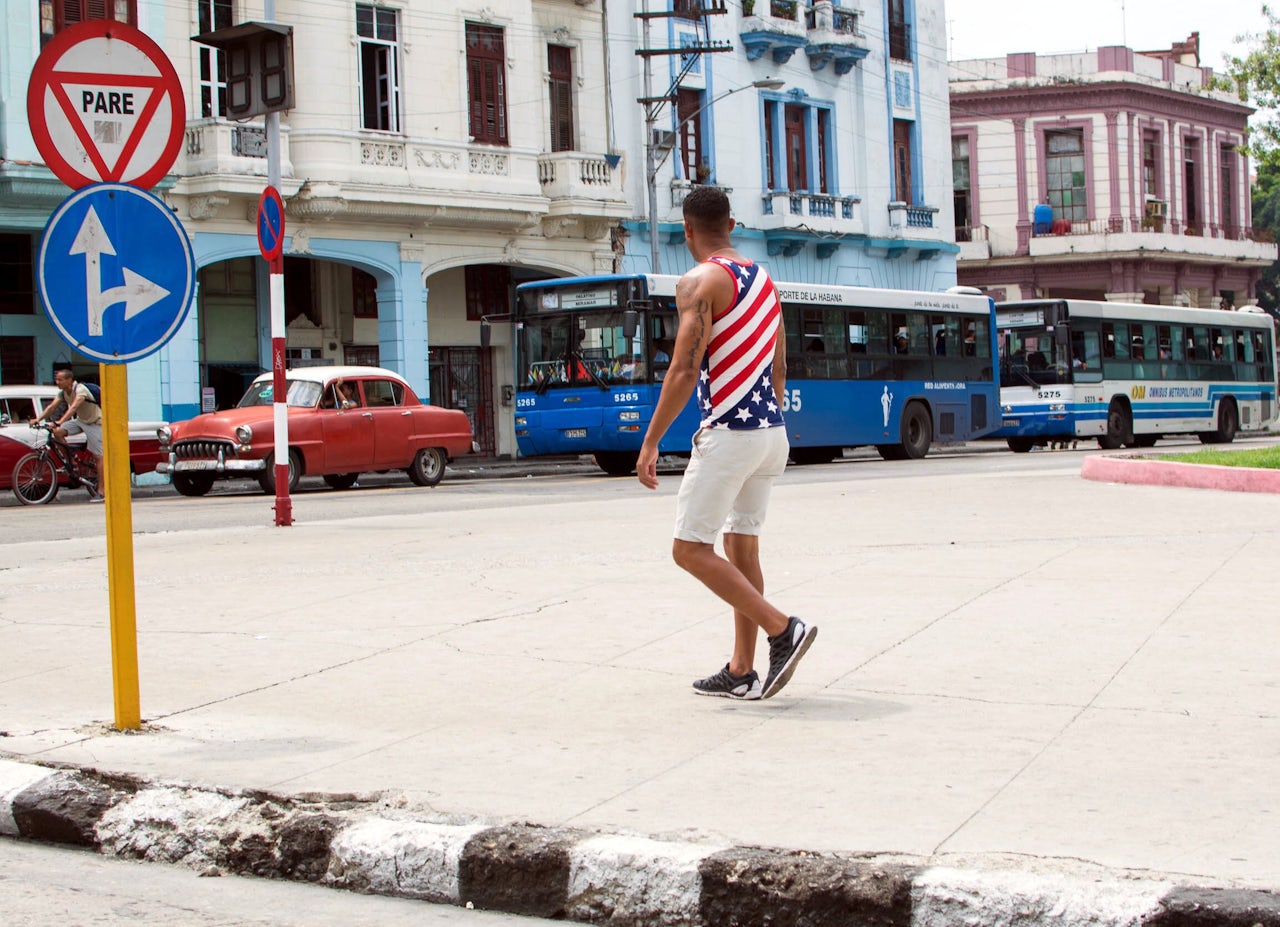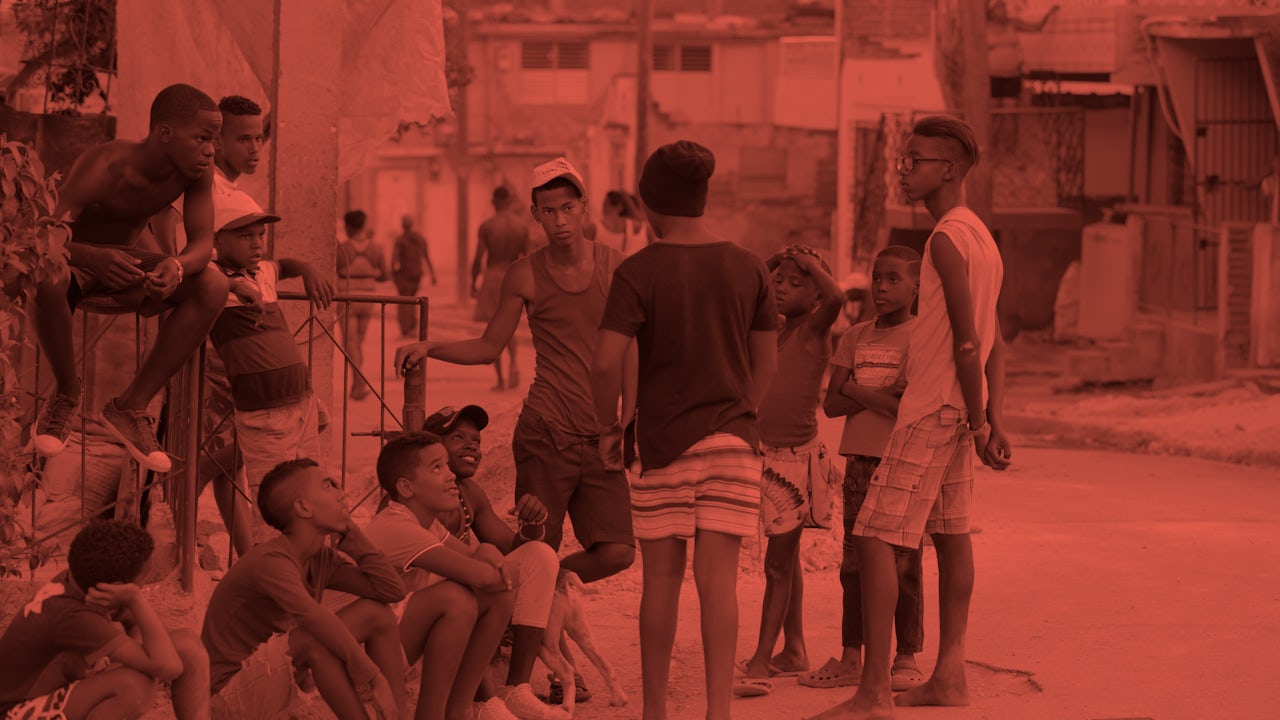At some point in American history, the flag became as much cultural as it had been political. Maybe a shift came when it was planted on the moon, an imperialist mission turned spectacle in 1969, or when Rocky Balboa draped it around his shoulders in Rocky IV in 1985. I don’t know. But as a child whose national banner felt limp in comparison — the red, white, black, and green of Sudan — I envied the American flag, its stars, its instant recognizability, its incorporation into clothes and sneakers, its built-in ability to say so much, even if you disagree wholeheartedly with what it’s saying.
In countries whose citizens have to beg to be allowed to visit the U.S., the star-spangled banner is ironically inescapable, making a promise bigger than it can keep. In Cuba, a country rightly devoted to its own red-white-and-blue symbol, the American flag is unbelievably popular. The back-and-forth flow of friends and family members who live in cities like Miami and a recent softening in diplomatic relations have contributed, suggested one person I spoke to on a recent trip with friends. Over the course of a few days, we saw variations of the flag everywhere: on swim trunks at the beach, denim patches and bodycons in a Wi-Fi park, and hanging crisply from the windows of crumbling buildings. The ubiquity was a reminder of how easily a symbol can lose its meaning.
Below are photos of the phenomenon in and around Havana, taken for The Outline by Cuban photographer Alejandra Glez.















